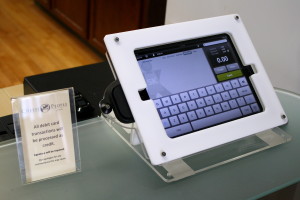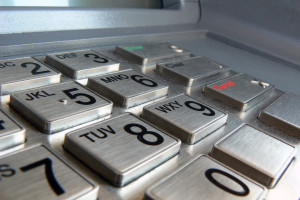November 12th, 2013 by Elma Jane
Since Medical Transcriptions is one of the product and services by National Transaction Corporation under National Transcription Corporation I just want to share this topic.
The abuse of the medical credit card system is growing by the day because many doctors are making these cards appear like an in-house payment program. Most patients are inclined to pay their doctor for their services directly, but they are more hesitant when a credit card is involved. Some medical professionals are masking the true source of their lending services and thus putting their clients at risk.
An example of this form of abuse can be seen by a company called CareCredit. Nearly 90% of New Yorkers in the CareCredit program opted for a program with no interest if the amount was paid in full. A quarter of them ended up paying 26.99% interest on their accounts instead. CareCredit has more than seven million cardholders nationwide, and it is currently the defendant in a variety of civil lawsuits.
If you are offered a chance to take to a credit card to cover your medical expenses, you should fully research the card before signing on the dotted line. Fully understand the terms of the card before agreeing to anything so you don’t end up in heavy debt.
Medical credit cards are designed to help people pay for procedures they may not be able to afford on their own. These cards give patients a chance to undergo the procedures their insurance may not pay for, as well as giving the doctor the opportunity to get their money right away.
While this may seem like a great setup, most patients are pressured into getting medical credit cards without knowing the excessive costs sometimes associated with them. They can fall into a debt trap very quickly.
Posted in Credit card Processing, Electronic Payments, Medical Healthcare Tagged with: amount, cards, clients, credit-card, debt, doctors, heavy debt, interest, lending, medical transcriptions, money, paid, patients, payment, procedures, professionals, risk, services, signing, system, terms
October 24th, 2013 by Elma Jane
Buoyed by an improving economy, business travelers are once again taking to the skies and spending more on corporate travel. The Global Business Travel Association has projected that $273.3 billion in travel dollars will be spent in 2013, and “that’s a whole lot of spending for corporate travel managers and individual business travelers to evaluate and track.”
Recognizing this problem, MasterCard launched Travel Controller on October 21. The new product is designed to give corporate users greater control over their travel expenses by directly addressing data concerns.
“Companies today are more than ever looking for more and better ways to help manage their corporate travel expense, to manage travelers that are outside of policy, and most importantly, reduce the amount of money they spend on travel.
Travel Controller is designed to be a modern solution to the problems posed by traditional lodge cards. Unlike these options, Travel Controller allows corporate users to identify individual travelers, trips and transactions, providing businesses greater insight into this spending than the available offerings that dominate the market.
Travel controller uses latest virtual card technology to generate a unique account number for each individual transaction, each hotel reservation and each ticket that’s purchased. And when its generating that card, it captures that data that’s important to the company for how they manage that.
Whether that’s the details of the transaction or things more specific to the trip or traveler or the way the company manages its budgets, all of this information is provided 100 percent of the time. This removes the headaches associated with central travel while still giving that control element that companies are looking for.
Travel Controller is around the goals of an end user organization, as a company that’s trying to manage their travel expenses more effectively.
There is a defined data set, and built in flexibility for companies to define their own customer-specific fields, that are important so that the data you get back isn’t just thousands of pieces of information, but rather its those things that are most important and its brought to you in a way that makes it easy to take advantage of.
Posted in Best Practices for Merchants, Credit card Processing, Financial Services, Merchant Services Account, Travel Agency Agents, Visa MasterCard American Express Tagged with: account, addressing, amount, association, business, card, controller, corporate, data set, dollars, dominate, element, expenses, generating, global, improving, individual, information, lodge, market, MasterCard, money, policy, reduce, spend, spending, traditional, transactions, travel, travelers, trips, unique, virtual
October 18th, 2013 by Elma Jane
Cash registers were the only game in town not too long ago, but these days companies have many more choices. Replacing antiquated cash registers with modern POS (point of sale devices carries a number of important benefits, including:
1. Can cut down on user errors. Hitting a wrong key is always a risk when ringing a sale, but point of sale devices have built in checks to ensure that the information is entered accurately.
2. Customers receive more informative itemized receipts with a point of sale devices. Many cash registers can only print the date and the amount of the sale, but since point of sale devices are tied into the inventory control system they can provide much more detailed information, including a description of the item, the list price and the sale price.
3. Easy to look up past transactions. If you need to know how much you sold last Tuesday a point of sale system can give you that information in a snap. It would take many hours of laborious work to find the same answer using a cash register.
4. Maintenance and repair costs are often much lower on a point of sale device than a cash register. The number of companies that repair cash registers is dwindling, and that means that repair costs can be rather high. There are many vendors who repair point of sale devices, and that can keep repair costs low.
5. Provide faster service than old fashioned cash registers. Every part of the process, from authorizing a credit card transaction to printing a customer receipt, is faster on a point of sale device.
6. Simplify the accounting process. Old fashioned cash registers force accountants to sort through hundreds of receipts, but with a point of sale system financial personnel can simply use the built in reports or create their own.
7. Unlike a cash register, a point of sale system often includes an overall inventory management system. Store owners can use a point of sale system to track their biggest sellers and reorder those products when stock gets low.
8. Workers now a days are often more comfortable with point of sale devices than old fashioned cash registers. Generation now entering the workforce never knew a time without computers, and as a result they are very comfortable working with computerized technology like point of sale devices.
9. You can use a point of sale system to create your own purchase orders, eliminating an extra step in the ordering process. You can even automate the ordering process to make sure you never run out of your hottest selling products.
10. You can see real time inventory with a point of sale device, something that even the best cash registers simply cannot do. In fact, many companies have found that implementing a point of sale system virtually eliminates the need for a costly hand count.
There are many reasons why your company should consider state of the art point of sale device and ditching the old fashioned cash register. These devices can lower the cost of doing business while increasing productivity, and that can be good for the bottom line.
Ready to make the switch from a cash register to a point of sale system? National Transaction can provide the software, hardware and support for any POS need. NTC integrate your payment processing into many accounting software titles such as Intuit Quickbooks or Peachtree Accounting. NTC can also provide integation for any restaurant cash register system and all industry specific solutions. NTC provide credit card readers for Android, Apple and Blackberry smartphones and tablet devices. National Transaction can make the World your Point Of Sale.
Posted in Credit card Processing, Mobile Point of Sale, Point of Sale, Visa MasterCard American Express Tagged with: accounting, amount, Android, Apple, authorizing, benefits, blackberry, cash register, computerized, control, costs, credit-card, date, devices, hardware, inventory, itemized, low, maintenance, point of sale, POS, price, print, process, readers, receipts, reorder, repair, sale, sale price, Smartphones, software, stock, system, transactions, vendors, virtually
October 15th, 2013 by Elma Jane
Banking and payments technology provider FIS and City National Bank, a private and business bank, have partnered to pilot FIS’s Cardless Cash Access at City National ATMs in Los Angeles, New York City and San Francisco. The solution lets consumers stage an ATM transaction from their mobile devices.
City National plans to introduce the emerging technology to clients in its three largest markets early next year, according to an FIS announcement, continuing FIS’ rollout of the solution at banks and ATMs in key U.S. locations.
FIS said Cardless Cash Access securely authenticates a user on his or her smartphone. The consumer then uses the phone to select the account and amount of the withdrawal. At the ATM, the consumer scans a QR code on the ATM screen and, within seconds, the cash is dispensed and an e-receipt is sent to the phone.
Consumers continue to look for innovative new ways to engage with their financial institutions via mobile devices, FIS Mobile, said in the release. At the same time, they demand additional security to keep their information safe. Information from Cardless Cash Access is maintained in the cloud, so card data cannot be accessed if the consumer’s phone is lost or stolen – making this a faster, safer, more secure way to make a withdrawal.”
To decrease fraud, FIS said, security within Cardless Cash Access is provided through the app’s authentication and registration of a user’s smartphone, which the company said eliminates card skimming risk and fraud incidents for banks and their clients.
With the proliferation of debit and access to cash at the point of sale, financial institutions are looking for ways to expand the utility of the ATM,” Senior vice president and head of product strategies, Vince Hruska, City National Bank, said in the release. “Cardless Cash Access not only provides a secure and easy way to obtain cash from an ATM, but introduces to the client a new way of looking at ATM use.
Posted in Financial Services Tagged with: account, amount, atm, authenticates, banking, banks, card, cardless, cash, data, e-receipt, emerging, financial, Mobile Devices, national, payments, QR code, securely, Security, Skimming, smartphone, transaction



